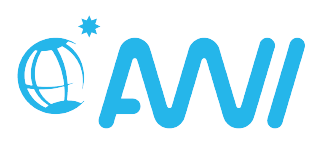1st Arctic Coastal Dynamics Newsletter
November 2000
1. Background
Arctic continental shelves comprise 30% of the area of the Arctic Ocean and contribute about 20% of the world's continental shelf area. This extensive circum-Arctic coastal margin, about 200,000 km long, is the interface through which land-shelf exchanges are mediated. Sediment input to the Arctic shelf resulting from erosion of ice-rich, permafrost-dominated coastlines may be equal to or greater than input from river discharge. Determining sediment sources and transport rates along high latitude coasts and inner shelves is critical for interpreting the geological history of the shelves and for predictions of future behavior of these coasts in response to climatic and sea level changes.
Though generally only a few kilometers wide (except in the vicinity of large deltas), the coastal zone of the Arctic Ocean is the site of dramatic changes in not only the land and ocean but also in the cryosphere and biosphere. The Arctic coastlines are highly variable, can be stable or extremely dynamic and are the site of most of the human activity that occurs at high latitudes. Extraction of natural resources occurs in many locations around the Arctic Ocean creating the need for port facilities and the potential for pollution. These pressures are only likely to increase with time.
Arctic Coastal Dynamics (ACD) is a multi-disciplinary, multi-national forum to exchange ideas and information. The project elements were formulated at a workshop in Woods Hole in November 1999 sponsored by the U.S. National Science Foundation and carried out under the auspices of the International Permafrost Association (IPA), its working group on Coastal and Offshore Permafrost and its coastal subgroup. The workshop report can be downloaded here. As a result of the workshop a metadata form for the selection and establishment of key monitoring sites was developed. A consistent and generalized coastal classification scheme was established based on morphology and materials. Consensus was reached on direct and indirect methodologies for estimating ground-ice volumes and presentations of data on maps. Finally, a suite of standard tools and techniques for development of long-term coastal monitoring site was recommended.
At the request of the IPA in April 2000 during the Arctic Summit Week the Council of the International Arctic Science Committee (IASC) approved funding for a follow up workshop to develop a Science and Implementation Plan for the ACD. This workshop was held at the AWI Potsdam, October 18-20, 2000. The participants developed a phased, five-year Science and Implementation Plan. The plan consists of two interrelated components: (1) a series of coordinated, synthesis activities, and (2) proposed focused research projects and long-term observations.
2. Objectives and Main Content of ACD
The overall objective of ACD is to improve our understanding of circum-Arctic Coastal Dynamics as a function of environmental forcing, coastal geology and cryology and morphodynamic behavior. In particular, we propose to:
- establish the rates and magnitudes of erosion and accumulation of Arctic coasts;
- develop a network of long-term monitoring sites including local community-based observational sites;
- identify and undertake focused research on critical processes;
- estimate the amount of sediments and organic carbon derived from coastal erosion;
- refine and apply an Arctic coastal classification (includes ground-ice, permafrost, geology etc.) in digital form (GIS format);
- extract and utilize existing information on relevant environmental forcing parameters (e.g. wind speed, sea level, fetch, sea ice etc.);
- produce a series of thematic and derived maps (e.g. coastal classification, ground-ice, sensitivity etc.);
- develop empirical models to assess the sensitivity of Arctic coasts to environmental variability and human impacts.
Several continuing and final products are anticipated:
- Communications: The web site will be expanded for data access, delivery, and linkages. An occasional electronic newsletter such as this one will be used to present summary information to a wide audience.
- Map: A digital circum-Arctic index map at approximately 1:10,000,000 to display generalized information including coastal morphology, geologic material, ground-ice, erosion status, site locations, and selected representative coastal segments.
- Database: The digital coastal database with interactive map viewing capabilities will be a final product and available on the web and on a CD-ROM.
- Synthesis: A book or special issue of a polar journal will present final results of synthesis and focused research.
3. Project Management
During the Potsdam workshop, the participants selected Volker Rachold to be the official IASC Project Leader. A project office will be established at AWI-Potsdam with a secretariat to maintain international communications including the web site and an electronic newsletter. The secretariat will be assisted by the International Steering Committee (ISC) consisting of:
Felix Are, Petersburg State University of Means and Communication
Jerry Brown, International Permafrost Association, Woods Hole
George Cherkashov, VNIIOkeangeologia, St. Petersburg
Mikhail Grigoriev, Permafrost Institue, Yakutsk
Hans-Wolfgang Hubberten, AWI, Potsdam
Volker Rachold, AWI, Potsdam
Johan Ludvig Sollid, Oslo University
Steve Solomon, Geological Survey of Canada, Dartmouth
Annual meetings or workshops will be used to review progress and modify the plan as required. As a cost saving measure and outreach to other workers, we will use other permafrost meetings as the venue for the ACD 2-3 day annual meeting. The following is a tentative schedule.
- First European Permafrost Conference, Rome, April 2001. A proposal for an ESF funded Exploratory Workshop in Potsdam following the Rome Conference is still under review. The outcome, which is known by November 20, 2000, will be announced on the ACD website.
- Eighth International Conference on Permafrost, Zürich, July 2003.
- Pushchino annual spring conferences 2002 and 2004.
- Final Conference with Special Conference Journal Issue, mid-late 2005.
4. International Coordination
Primary coordination will be with the parent IPA and IASC activities and projects. For IASC this includes LOIRA, ADD, IBCAO and the new basin sediment project. There are many bilateral and multinational programs and projects for which close coordination and joint activities will be pursued, particularly the IGBP LOICZ program. The Secretariat will keep other organizations informed of ACD status including the AOSB, APARD, and IGU commission.
Responsible: V. Rachold










